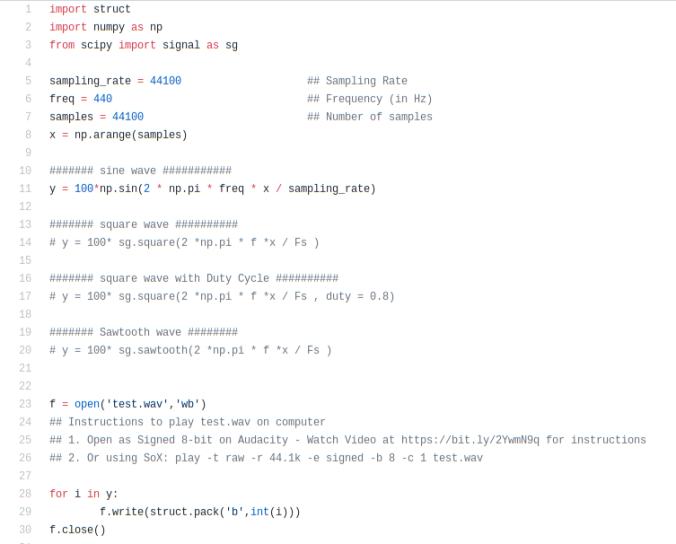Updated: May 15,2019
Now it comes as a surprise to many people when I tell them that generating an audio waveform is extremely simple.
One needs to have basic understanding on how audio signals work and basic python programming to generate any audio wave form. This post will show you exactly how.
Python packages needed: Numpy, Scipy

How to play the audio the generated audio file on computer ?
1. Command line using SoX
play -t raw -r 44.1k -e signed -b 8 -c 1 test.wav
where -r = sampling rate -b = sampling precision (bits) -c = number of channels
2. Use Audacity (check video)
Link to code : GitHub
You can find a list of other waveforms that can be generated using SciPy here
Known Issues:
[1] This does add any headers to the audio file and therefore you cannot play it on any media player as is . Check this reddit post if you really want to have one.
[2] Adding headers to the above code seems to be making it slower. And this is a problem if you want to make larger audio files.
[3] The code generates only 8-bit audio signal. Feel free to play around with the code to change it to other formats.
[4] A lot of technical details were conveniently not included in code in order to appeal to the theme of this post. And therefore this code is not “efficient”.